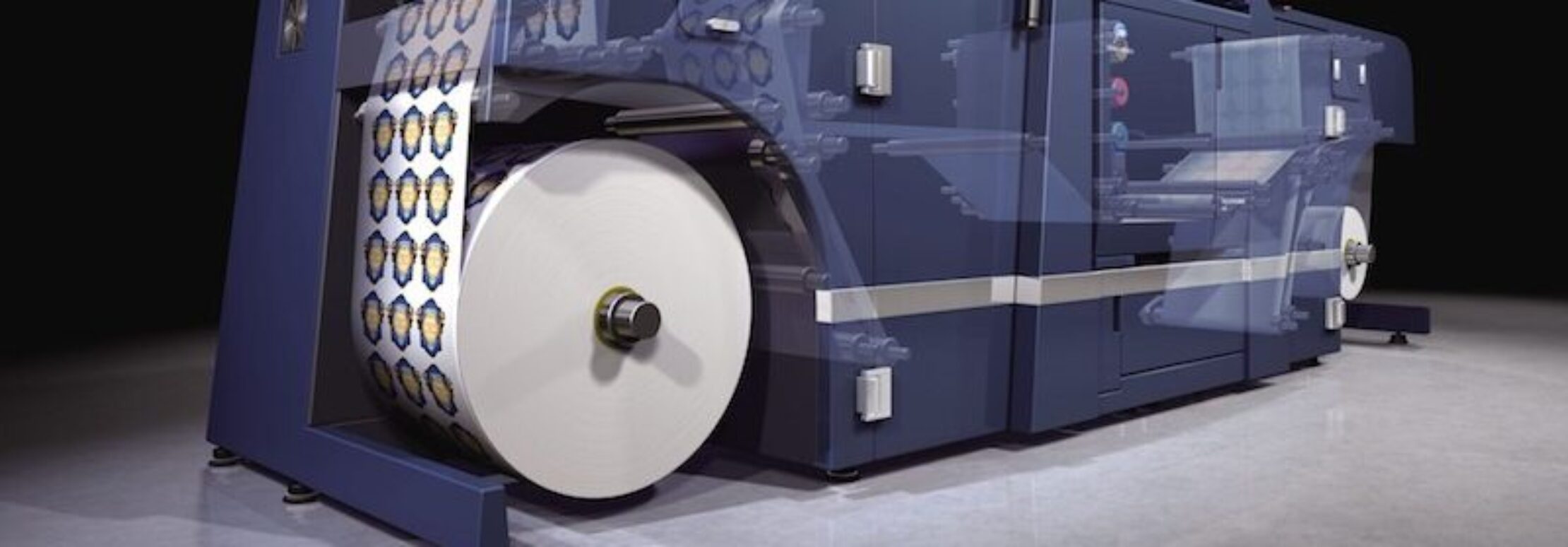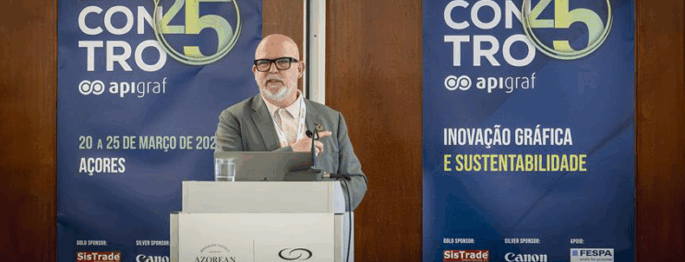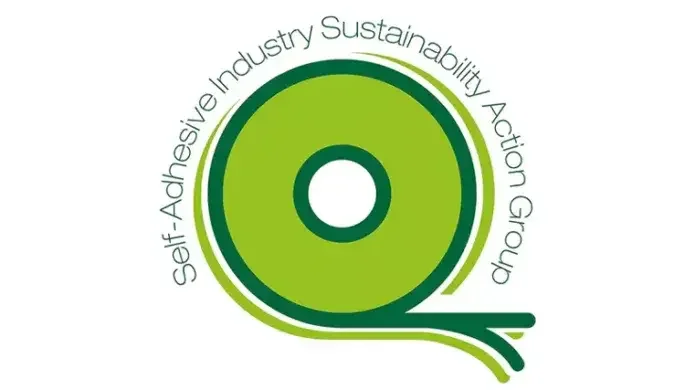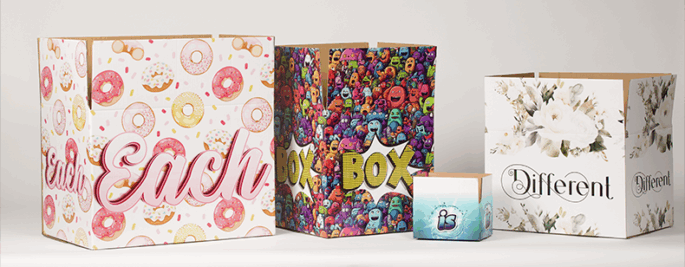
The labeling sector is a vast, growing business opportunity, increasingly served by digital printing. The article surveys entry-level label printers from vendors like Anytron, Konica Minolta, and Domino. These compact, roll-fed devices offer diverse technologies (toner, water-based, UV inkjet) to allow print shops to cost-effectively diversify from large format into short-run label production.
Modern inkjet printers are highly capable devices, able to print to a variety of different stocks, and to challenge across multiple applications. This means that large format printers can be used to produce labels, while label presses are increasingly being used for packaging. So it shouldn’t be a surprise that recent Fespa shows have seen plenty of labelling solutions in amongst all the large format printers.
The labelling sector itself represents a huge business opportunity. It stands to reason that as the world’s population continues to grow, so there will be more products consumed, each with their own Stock Keeping Unit codes or SKUs, and each needing their own label. And a growing percentage of these labels are being produced digitally, both through small producers looking for more professional labels, or big brands running more targeted campaigns.
There’s a good argument for producing some labels on a large format press, where the width leads to good productivity. This can work well for some applications such as decals. But many label applications are more complex and often require further converting steps such as die cutting and foiling. For this reason its easier to print to a narrow web roll that can then be moved over to a converting unit.
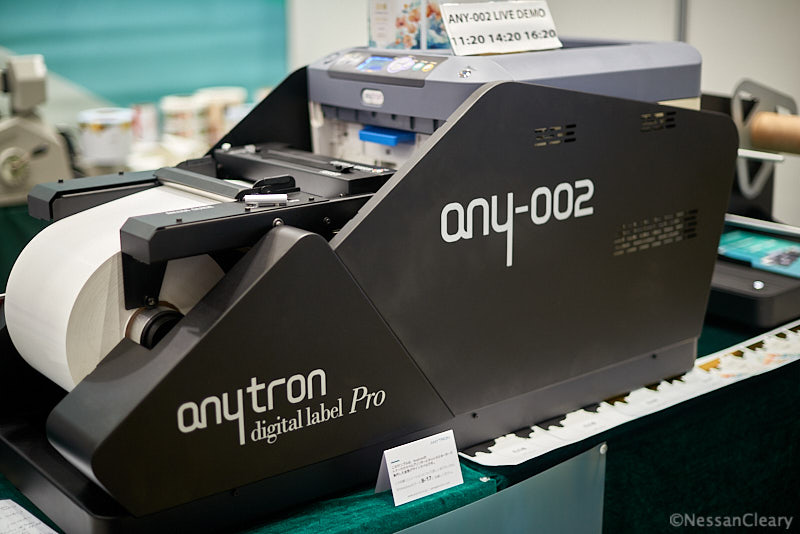
As with any print sector, there are different levels of complexity from basic label printers all the way up to modular lines that can incorporate some or all of the converting steps. There are several desktop printers that include winder and rewinder with a small print unit that can offer a good place to start.
A good example of this is the Any002 printer from the South Korean vendor Anytron. This is based around an Oki colour laser engine with winders either side and can be used for both short run labelling and flexible packaging. The main advantage of this is that toner will print to a wide range of different media, including paper and plastic, meaning that it can handle a vast range of label stocks without requiring any further treatment.
The Any002 takes rolls up to 215mm wide and has 600 x 1200 dpi resolution with a speed of 9mpm. It has a sensor that can pick up gaps and registration marks, which allows for accurate front to back registration. It can also be used for foiling, by printing the black toner first where the foil is to go and then running this through a separate foiling machine. After this, the label roll can be put through the Any002 for colour printing.
A step up from this is Konica Minolta’s entry-level series of label presses that offer excellent print quality and the sort of robustness needed for an industrial application but at a relatively low price. Essentially, the company has taken the proven dry toner print engines from its sheetfed production printers and re-used these as the basis of its label printers complete with unwinder and rewinder for roll-fed substrates.
There are two models. The AccurioLabel 230 can print at up to 23.4mpm in CMYK with 1200 x 1200 dpi resolution. It takes media from 250 to 330mm wide, and from 81 to 256gsm. It’s mainly targeted at short run work, typically 200-700 linear metres but can be as low as 50 linear metres.
Konica Minolta followed this up with the faster AccurioLabel 400, which can run at 39.9 mpm for CMYK. This model also gains a fifth colour station for white, though the speed drops to 20mpm. It also features an automatic calibration unit, the IQ-520, which includes a spectrophotometer that can read the colours in real time and automatically adjust density and registration as well as taking into account temperature changes during a print run.
Toner has a further selling point in that there’s no risk of chemicals migrating through the packaging, which is a risk with UV inkjet as these chemicals could contaminate some products such as food and cosmetics. Some inkjet vendors have developed water-based inks as a safer alternative to UV-curable inks for use with these more sensitive products. However, most of these printers are relatively slow, leaving them also in the entry-level class. A good example of this is Epson’s 4000-series, such as the Surepress L-4733AW, which runs at 8.2mpm. It uses water-based resin inks, printing CMYK plus orange and green as well as white. The print quality is excellent and there’s an option for an inline spectrophotometer to ensure consistent colour profiles across multiple presses.
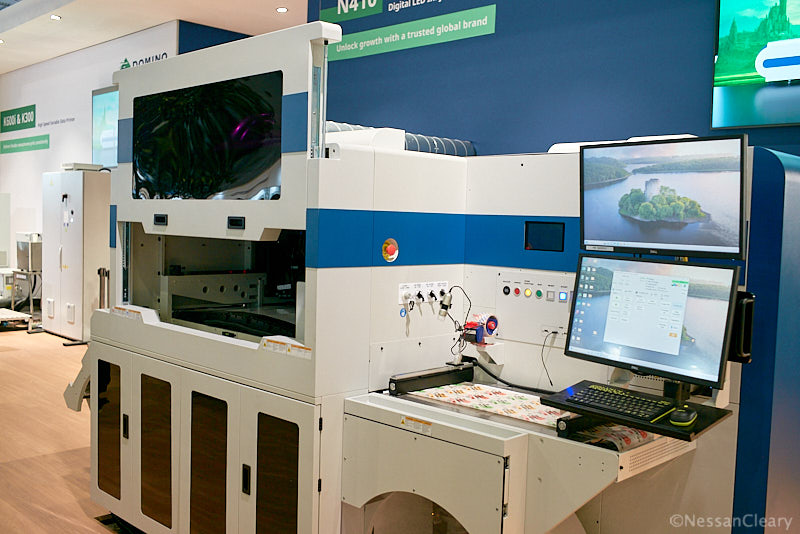
Recently some of the more established digital label press vendors have started to introduce their own entry-level label presses. Domino, for example, has just launched an entry-level press, the N410, which is a very compact device with a print width of 330mm. The standard speed is 30mpm though there is a 50mpm option but this is only practical for low coverage jobs. It uses Kyocera printheads for 600dpi resolution and runs UV LED inks with CMYK plus white at 600dpi resolution. It lacks some of the automation of Domino’s high-end presses but it does include corona pretreatment and an anti-static system for working with plastic substrates.
The British manufacturer Dantex has just launched a new PicoColour inkjet model. It’s specifically targeted at the label rather than packaging market with a 254mm print width. It’s fitted with Ricoh printheads, giving it a native resolution of 600dpi though Dantex claims an apparent resolution of 1200 dpi. The standard model runs CMYK inks at speeds up to 50mpm but there is also an optional white channel, though this runs at 30mpm.
Equally the Heidelberg subsidiary Gallus, which sells high speed inkjet presses built on flexo chassis, has just introduced a cheaper model, the Gallus Alpha. This runs at 65mpm on a 340mm width. The base model uses CMYK plus white but there is also a six colour plus white option.
So there is plenty of choice for anyone looking for an entry point into the labels sector, from desktop to more industrial label presses. In some cases it’s possible to add additional units such as a die cutter but for most you will have to factor in a nearline converter device to finish the labels off. Nonetheless, the level of investment required depends on which area of the label market you want to target, which for most readers will likely depend on which part of the large format market you are already serving.
